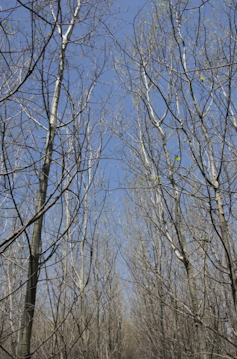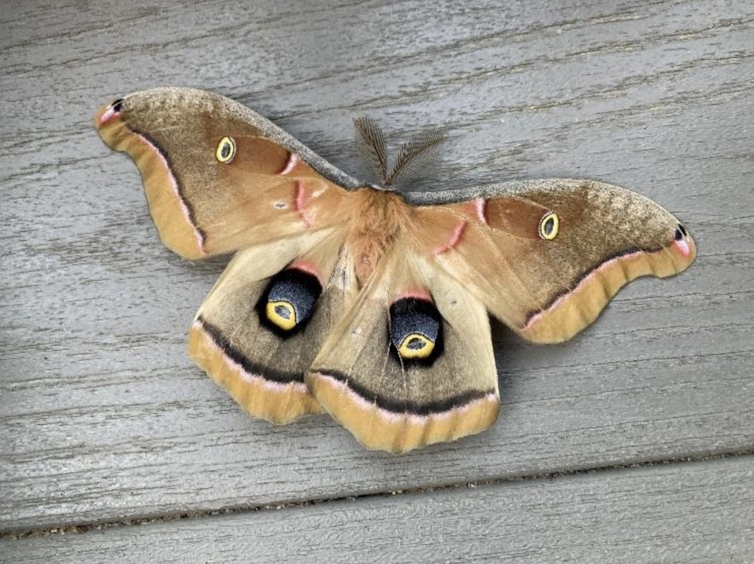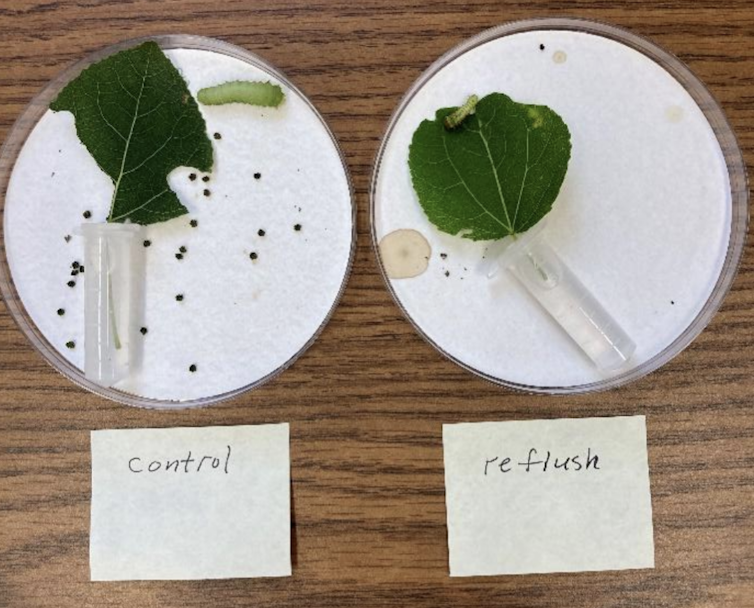Invasive caterpillars can make aspen forests more toxic for native insects – a team of ecologists ex
Research finds that extensive feeding by invasive insects can cause trees to produce defense compounds, to the detriment of valued native insects.

When we walked with a colleague into an aspen forest near Madison, Wisconsin, in the early spring of 2021, we expected to finalize our plans for a research project on several species of insects that live and feed on the trees. Instead, we found a forest laden with fuzzy, brown egg masses.
These masses, belonging to an invasive species known as the spongy moth, brought our plans to a screeching stop. We knew that within weeks, hungry spongy moth caterpillars would strip the forest bare.

We are chemical ecologists interested in how plant chemistry influences the interactions between plants and plant-feeding insects. As seasoned scientists, we’ve seen that good science stories sometimes end up nowhere near where the researchers first anticipated. This is one of those stories. And like many good stories, it incorporates villains, beauty, poison and death.
After an initial period of distressed hand-wringing about the fate of our aspen forest, we pivoted our research plans. We decided to address how defoliation – another word for leaf consumption – by an invasive species might alter the chemical composition of plants, to the detriment of native species.
All plants produce defense compounds to fend off herbivores, like insects, that try to eat them. These defenses include well-known chemicals like tannins, caffeine and cyanide. In turn, insects have evolved adaptations to these chemical defenses tailored to the particular species that they feed on.
The results from this study surprised even us and were published in September 2023 in the journal Ecology and Evolution.
The ecological players
Quaking aspen (Populus tremuloides) is the most widespread tree species in North America.

As a keystone species, aspen provides food and shelter for many forest organisms. Without these trees, forests across much of North America would look very different. Aspen has been ecologically successful in part because of its unique chemistry. It produces a class of defense compounds called salicinoids. Under most conditions, these defenses keep herbivores from fully defoliating the trees.
Invasive spongy moths (Lymantria dispar) are the most destructive defoliators of broadleaf forests in North America. Aspen is a favored food plant of spongy moths, which feed on expanding leaves in early summer. At high population densities, spongy moths can defoliate extensive areas of forest.
This spongy moth-induced carnage does not bode well for other insects that depend on aspen for food, such as the native silk moth Anthereae polyphemus, which feeds on aspen from mid- to late summer.

A natural experiment
From May through June 2021, spongy moth caterpillars ate nearly every green leaf in our aspen forest.
By early July, however, the trees grew another full set of leaves. A second aspen forest of the same age, located 4 miles (6 kilometers) away, experienced no defoliation.

This combination of damaged and undamaged forests provided the perfect conditions for what scientists call a natural experiment. The undamaged forests served as an experimental control that we could compare with the damaged forest to evaluate the consequences of spongy moth defoliation for insects that feed in late summer.
We collected leaves from both forests in late summer and analyzed them for levels of salicinoids.
We also fed the native polyphemus caterpillars leaves from either the defoliated or control forest to see how the defense compounds might influence their ability to live and grow.
We found that after defoliation by spongy moths, aspen trees grew a second set of leaves with much higher levels of salicinoids – an average of 8.4 times higher. In contrast, the control forest had leaves with far lower salicinoid levels, typical of aspen in late summer.
The high levels of defense compounds in the defoliated forest caused serious damage to the native silk moth caterpillars. Few caterpillars survived when fed leaves from the previously defoliated forest. Those that did survive had stunted growth.

Ecological implications
Our research showed for the first time how an invasive species can harm a native species by making their shared food resource far more toxic. And this type of ecological dynamic is likely not restricted to just aspen and silk moth caterpillars.
Over 100 different species of insects and mammals feed on aspen, and our earlier research has shown that high levels of salicinoids are harmful to many of them. Other tree species, like oaks, also produce more defense compounds after spongy moth defoliation, which could affect native herbivores.

Insects are critically important for the functioning and flourishing of all terrestrial ecosystems. But scientists have seen their numbers and diversity decline worldwide, a phenomenon called the insect apocalypse.
The causes of these declines are many, varied and far from completely known. Research like this is helping to fill that gap. Plant toxin-mediated indirect effects of invasive species appear to be yet one more cut in the death by a thousand cuts experienced by insects worldwide.
Finally, our story is one of science in action. Scientists cannot fully anticipate how natural events may disrupt the best-laid research plans, especially for field projects. Floods, droughts, tornadoes, lightning strikes, insect outbreaks – our research groups have experienced them all.
Occasionally, though, researchers can counter these challenges with creative ingenuity and scientific adaptability. And those can lead to surprising breakthroughs in our understanding of this extraordinary world.
Richard L. Lindroth received funding from the Wisconsin Alumni Research Foundation, project 135G909 and from the U.S. Department of Agriculture McIntire-Stennis Program, grant WIS03003.
Patricia C. Fernandez has received funding from the Fulbright-CONICET Program, Visiting Scholar Fellowship.
Read These Next
Meth inflames and stimulates your brain through similar pathways – new research offers potential ave
Researchers identified a key molecule that highlights how the immune system is linked to the release…
The 17th-century Pueblo leader who fought for independence from colonial rule – long before the Amer
Po'pay, a Tewa religious leader, led the Pueblo Revolt, the most successful Indigenous rebellion in…
Racial profiling by ICE agents mirrors the targeting of Japanese Americans during World War II
Asian Americans have drawn parallels between today’s attacks on Latinos and a historically exclusive…






